In this piece, I’ll share some pointers on how to create a Google-sponsored search strategy that caters to the demands of your local business.
I will discuss:
- Professional advice on Google Ads account setup, ad extensions, and landing sites.
- Conversion monitoring, keyword research, and targeting tools that are the most successful.
- Additional techniques for maximising the return on your Google Ads spending.
Whether you’ve used Google Ads previously, are thinking about starting a campaign for the first time, or are an agency wanting to service a local client, you’ll leave this article with the information, techniques, and ideal practices you need to succeed.

A simple but effective Google Ad Search Advertisement.
10 Google Ads Secrets to Success for Small Businesses
Local advertising on Google, when executed correctly, can be a very successful way of acquiring local clients and achieving your regional business goals. So, let’s get started with some pointers to assist you achieve just that.
1. Try using a SKAG-based account structure.
When it comes to investing in paid marketing channels, it is critical for any marketer to completely grasp the “why” aspect. On the surface, it may appear to many that this is common knowledge, but I frequently come across firms who believe they have to run adverts without any explicitly defined outcomes. The answer to this issue, whether it is for one or several campaigns, is that it is essential how you structure your account. For many local firms, increasing foot traffic or online orders may be the significant motivator for getting started, but those objectives must be narrowed even further. If you’re going to spend money on targeted keywords, you should have precise goals in mind for those ad groups. I prefer to construct accounts using the single keyword Ad Group strategy, abbreviated as “SKAG.” This enables me to develop highly targeted advertisements and keyword ad groupings that can be adjusted based on match type. Here’s an example of what this may look like for a bakery business model:
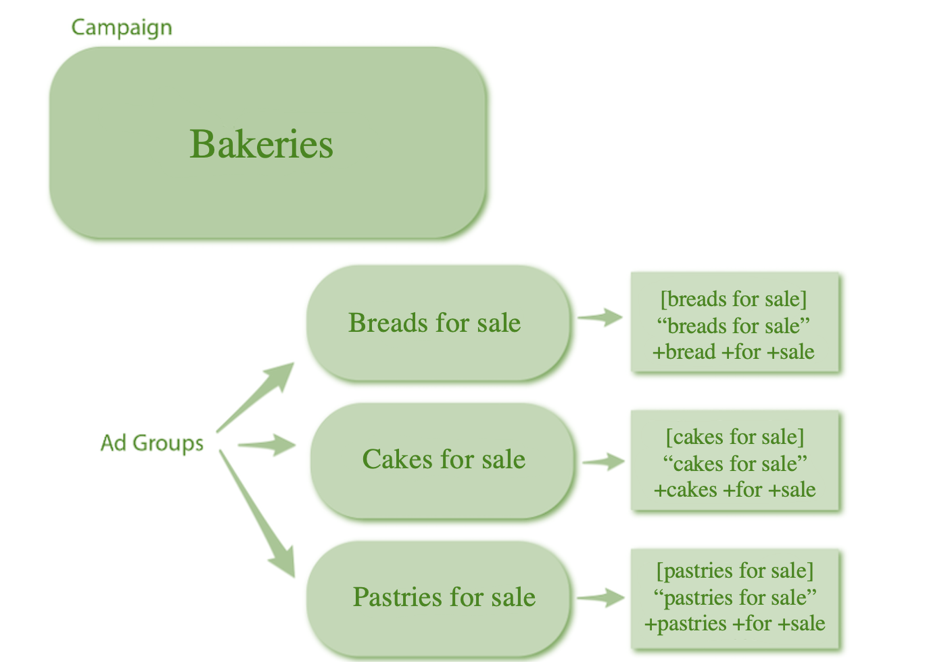
A diagram showing an effective Google Ad Campaign structure for a local Baker.
This account structure works well for executing a paid search campaign for locally-driven searches because it allows you to be very exact with the phrases you are targeting and the advertisements that are shown to those users. Relevance is essential in every organisation that uses PPC advertisements. For example, if you own a local bakery, you might have a campaign model similar to this:
Campaign Bakery
Ad Group Bakery Near Me
Keywords “bakery near me” [bakery near me] +bakery +near +me
2. Use Google Tag Manager to track your conversions
One of the most challenging (but crucial) parts of paid advertising is the ability to measure conversions. Conversions, for those who are new to the wonderful world of digital marketing, are the desirable activities that you want consumers to perform after clicking on your ad. For instance, if I run an ad that drives a visitor to a web page with a sign-up form and they fill it out, it counts as a conversion. This would be the fulfilment of an order for establishments such as bakeries.
The process of setting things up might be tough for individuals with insufficient web programming skills. Installing Google Tag Manager across your company’s website is the simplest approach to build conversion events. Tag Manager will enable you to rapidly create the events you desire in the locations you choose.

Setting up Google Tag Manager to track conversions can be complex but it's worth it.
For instance, if you want to increase orders for the bakery, you need to set up a conversion action on the order confirmation page. Assigning conversion values for purchases is one of the more complex procedures for a business like this. For example, you may return the cart values to Google so that when a customer makes an order, you can calculate the return on investment from your advertisements. This new level of complexity will help you to determine what your most successful campaigns are over time, and you will be able to allocate funding with certainty based on average conversion rates.
3. Set up call extensions
It’s reasonable to presume that the great majority of local establishments would need to include a phone number, especially in paid adverts. It’s straightforward to set up phone extensions in your adverts. Choose the campaign for which you want to add the call extension, and then choose “Ads and Extensions” from the left-hand menu:
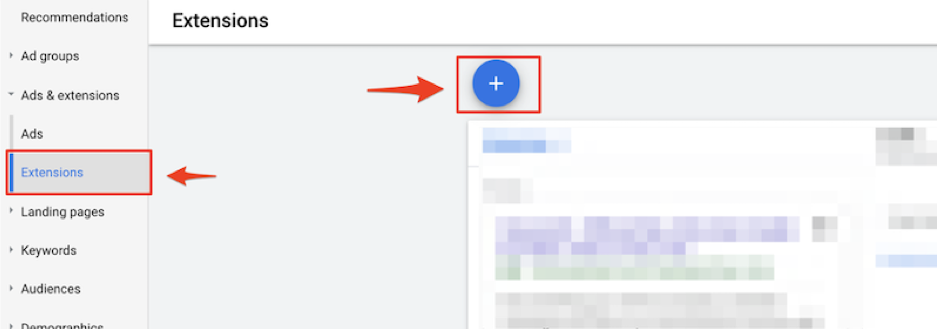
Setting up Call Extensions can transform your campaigns ROI.
- Choose “Extensions” and then the plus symbol on the right.
- Choose “Call Extension” from the list of options.
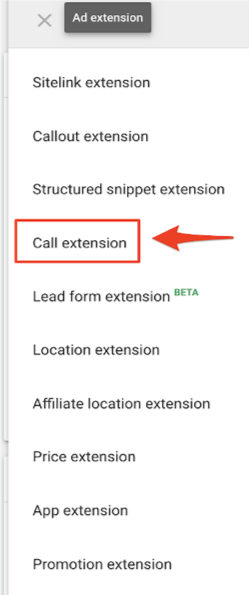
Call extensions are easily added to new or existing campaigns.
You will then be able to add your business number to your advertising. This serves as an “extension” to your adverts, providing a secondary choice for people to click on if they want to call rather than visit your website
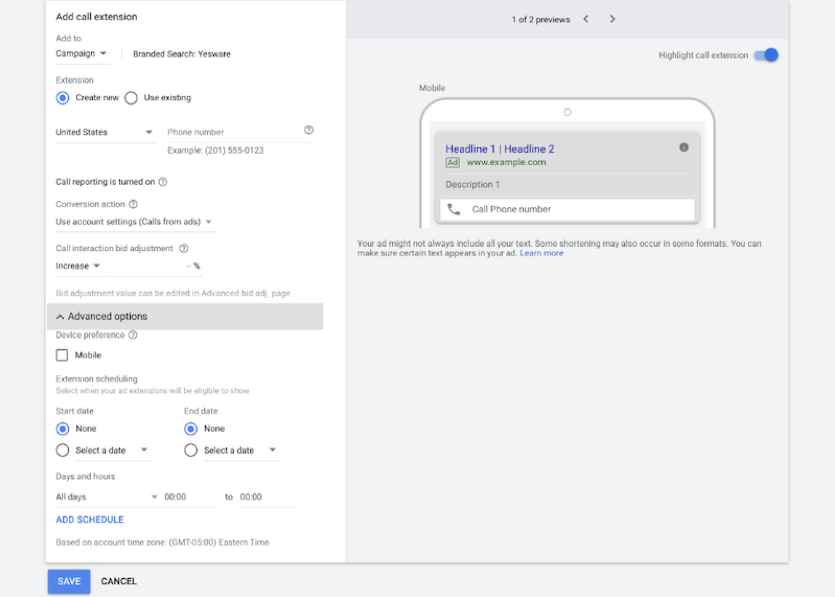
You can consingle-image further options when in the create extension screen.
You may also specify a time frame for the call extension that corresponds to the hours of operation of your firm. If your company is closed, you can choose to hide the extension there.
4. Refine your targeting
When developing a paid strategy, one of the three key factors is targeting. Targeting is particularly important for local businesses, as you will want to draw an audience as locally to your business’s site(s) as reasonable. To make changes to location settings, first, choose the campaign you want to update, then click “Locations” from the left-hand menu bar.
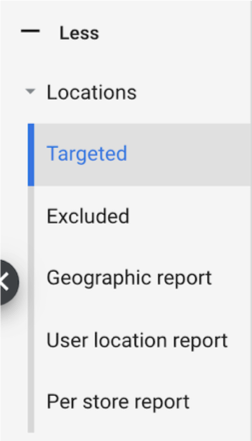
Better refind your audience by adjusting your targeting.
Under “Targeted,” you may choose certain locations or radiuses to target:
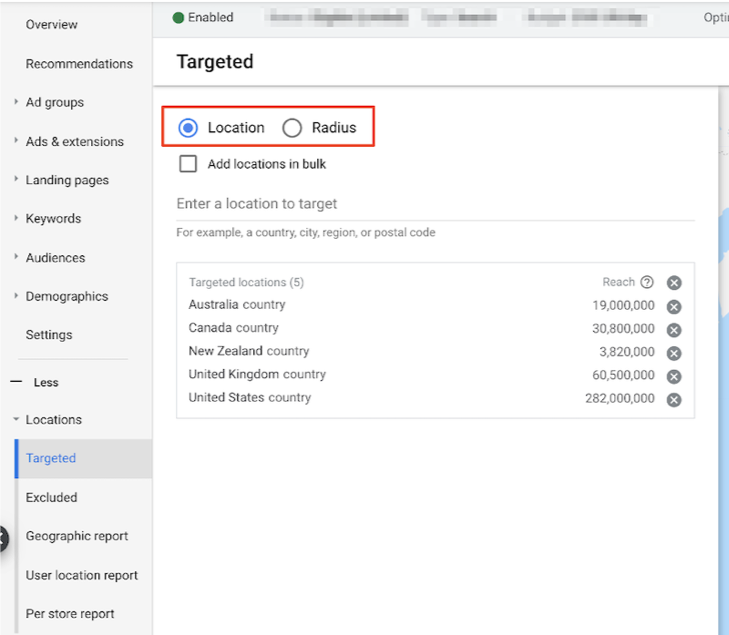
Settings for targeting are extensive in Google Ads.
You can choose to target a region directly or by radius. So, if you have several brick-and-mortar sites, you may set a mile radius around them to attract search traffic within operational proximity. One thing to keep in mind when defining the areas for your campaign is that there is an option that Google often does not state clearly. When you choose your campaign and then the campaign parameters, you’ll see the following target locations:
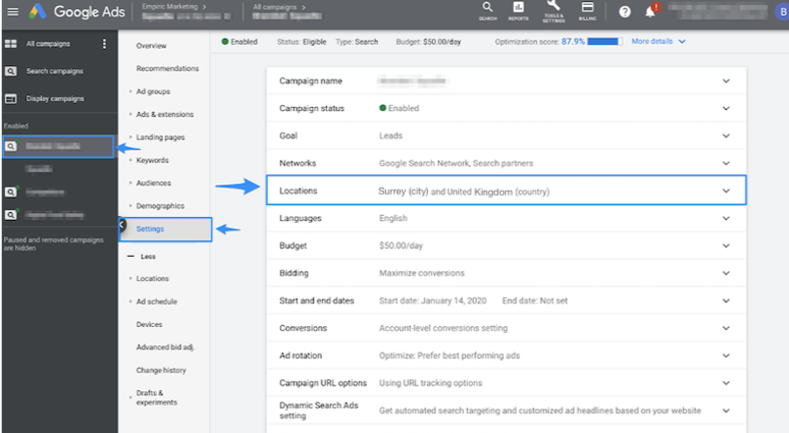
Setup locations for your Google Ads to make targeting specific to your service area.
Expand “Locations” to see the targeting specifics:
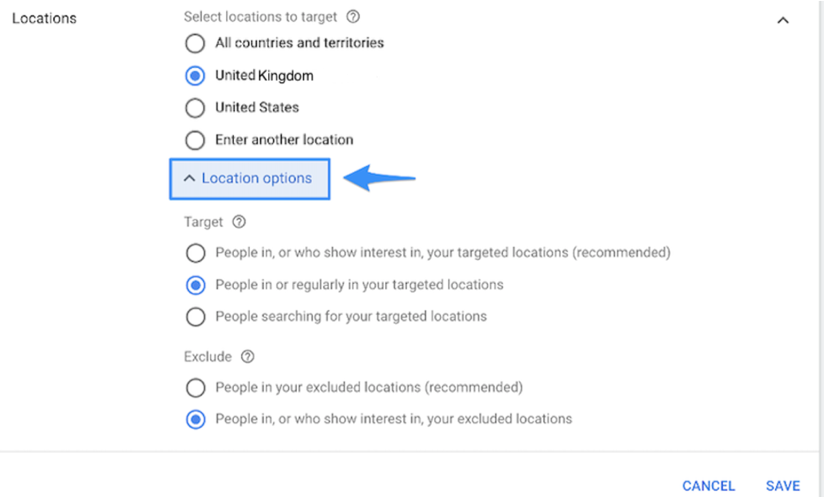
Do you want to target those in your target location or those who visit it?
Then, select “Location Options” and choose “People in or regularly in your targeted locations.” This guarantees that you are only advertising to those who are physically browsing within the specified radius.
5. Align your offer with specific enquiries and primary advertising objectives.
Many marketers are uncertain as to which campaign, they should target with paid advertising. Fortunately for local companies, the search queries you select to target can influence your promotional strategy. For example, if you target the phrase “cakes near me,” you will definitely want to direct traffic to a website where people can buy cakes. If you’re targeting “bakeries near me,” you’ll most likely want to direct people to your site, which has a wealth of reinforcing information and source credibility. That same firm, on the other hand, might target “pastries for sale near me” and lead users to a website dedicated to purchasing pastries.
When determining which promotions to employ or keywords to bid on, I recommend returning to your primary aim for running ads—generating income. There are two approaches to determining how to optimise income with search ads:
1. From which product or service do you get the highest sustainable profits?
2. What is the monthly search volume for search keywords linked to the goods or services you sell? Moreover, how competitive are these phrases, and what is the average cost per click?
6. Use keyword research tools
There are several paid keyword research tools available, but you can also employ free keyword tools such as Google’s Keyword Planner. This tool gives you a broad idea of the search volume for your preferred search phrases, as well as some other valuable information. Click the “Tools and Settings” icon in the top right-hand corner of your Google Ads dashboard to visit the Keyword Planner. Next, from the menu, choose “Keyword Planner”:

Keyword research is vital for a performant campaign.
You can input the keyword you want to forecast here:
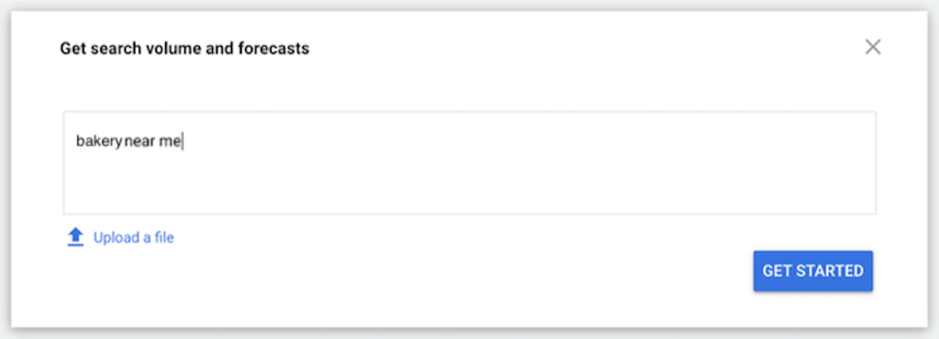
Generate accurate forecasts for potential keywords in Google Ads.
Once you click, you will be sent to a screen where you may change the location(s) for which you want to view the keyword volume:
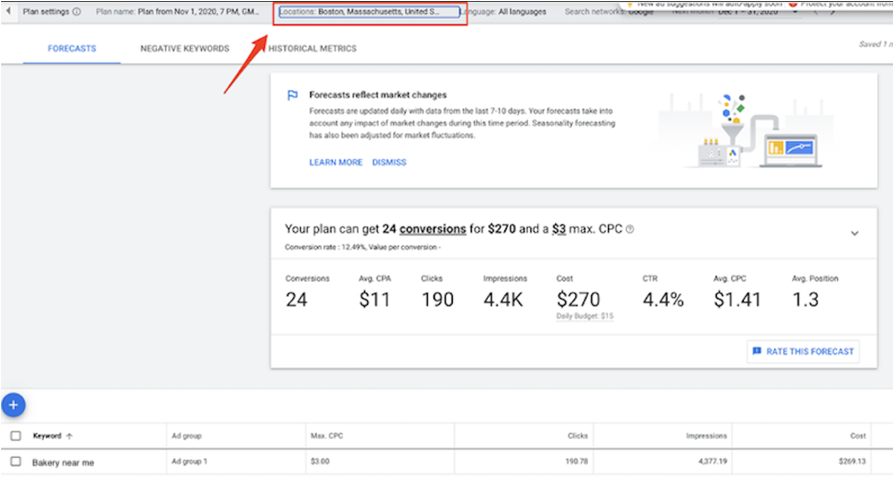
Change locations for potential keywords to discover hot-pocket locations.
7. Leverage Google Trends
You may also examine Google search trends to see how the present pandemic circumstances are impacting the volume and frequency of specific search inquiries. Just go to https://trends.google.com/trends/?geo=US to do so.
Then, you may enter the keyword for which you are seeking data as well as the location:

Google Trends is free and easy to use to discover the popularity of keywords vs time.
Given the search words and geographical location used in the above example, you can see that ‘bakeries’ google searches peaked in July and have started to decline as we near winter at the bakery’s branch in the US.
8. Ensure that your website is well-organised and mobile-optimised.
These characteristics make paid search for local companies especially effective if their website is well-organised. The website itself is crucial in this case. Many small companies may have invested little thought into their internet presence in the past, but with the current pandemic, there is no better opportunity to improve its quality. The vast majority of people use their mobile phones to look for local companies. Having mobile-optimised landing pages — whether they are part of your site or standalone, unlinked sites — is a great benefit in the paid search sector. Mobile navigation is critical not only from a conversion standpoint but also from a Quality Score standpoint. If your home page is clear and easy to use, Google will offer you an advantage over competitors bidding on the same key terms.
9. Deliver exceptional service
Acquiring new consumers is one thing; but attracting new, returning customers is quite another, and both may be accomplished with well-designed Google Ads campaigns. If your firm is good at what it does, a completely optimised campaign will result in more profit over time from single conversions. Whatever technique you use, there will always be a variety of prospects awaiting your organisation as a consequence of local search searches.
10. Consider outsourcing
It seems intimidating to begin managing sponsored search advertisements on Google, especially if you have never done it before. Depending on your budgetary circumstances, you may always outsource this operation. This alternative might be beneficial in the long term, especially if you only need help to get everything set up. You may always study paid search over time rather than getting caught up in the rush to generate cash. There are several organisations and individuals available to assist you in setting up or enhancing your account. Once you’ve developed an optimum campaign design, conversion tracking, and promotional approach, you’ll be able to economically grow your advertisements and generate additional income in addition to your usual word-of-mouth foot traffic or organic internet purchases.
Try these Google Ads optimisations for local businesses
To summarise, follow these 10 suggestions to obtain the greatest results and the most return on your investment with Google Ads for your local company:
- Try a SKAG-based account structure
- Use Google Tag Manager to track your conversions
- Set up call extensions
- Refine your targeting
- Align your offer with specific enquiries and primary advertising objectives.
- Use keyword research tools
- Leverage Google Trends
- Ensure that your website is well-organised and mobile-optimised
- Deliver exceptional service
- Consider outsourcing


